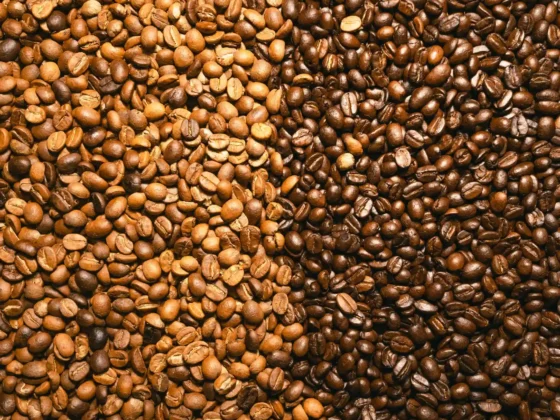The coffee cherry, often overshadowed by the globally renowned coffee bean, is a remarkable fruit with a depth of potential that goes far beyond its initial role in coffee production. This hidden gem of nature presents not only a rich tapestry of flavors and aromas but also a spectrum of uses that extend into various fields like health, culinary arts, and even skincare. As we delve into the world of the coffee cherry, we uncover the intricate processes from cultivation to processing, the impact of environmental factors on its quality, and innovative uses that are reshaping industries. This exploration not only broadens our understanding of this often-overlooked fruit but also highlights its significance in sustainability and ethical practices within the global coffee industry.
Not in the mood for reading? Tune in to the audio version of the article below.
- Introduction & Key Takeaway
- https://app.mysoundwise.com/tracks/17007582871526951e.mp3
- The Biology of Coffee Cherries
- https://app.mysoundwise.com/tracks/17007583244043809e.mp3
- From Cherry to Bean: The Processing Journey
- https://app.mysoundwise.com/tracks/17007583541286841e.mp3
- Impact on Coffee Flavor and Quality
- https://app.mysoundwise.com/tracks/17007583831054021e.mp3
- Sustainability and Ethical Considerations
- https://app.mysoundwise.com/tracks/17007584183067041e.mp3
- Beyond the Bean: Other Uses of Coffee Cherries
- https://app.mysoundwise.com/tracks/17007584548027422e.mp3
- Conclusion & FAQs
- https://app.mysoundwise.com/tracks/17007584904492087e.mp3
What is a Coffee Cherry? – Key Takeaway:
- The versatility of Coffee Cherries: Beyond producing coffee beans, coffee cherries are used in teas, culinary creations, and skincare products, demonstrating their wide-ranging applications.
- Influence on Coffee Flavor: The method of processing coffee cherries, such as washed or natural, plays a significant role in shaping the coffee’s taste, highlighting the cherry’s importance in coffee production.
- Sustainability and Ethics: Coffee cherry cultivation impacts the environment and local communities. Sustainable practices and ethical sourcing are crucial for responsible coffee production.
- Role of Terroir: The terroir, including factors like climate and soil, greatly affects the coffee cherry’s quality and flavor, giving each region’s coffee a unique character.
- Innovative Uses: The coffee cherry is at the center of innovative practices in agriculture and waste management, showcasing its potential as a sustainable resource across industries.
The Biology of Coffee Cherries
The coffee cherry, often known as the coffee berry, represents the culmination of the growth cycle of the coffee tree. This fruit undergoes a transformation from a green, unripe state to a fully matured red berry. Each stage of ripeness not only indicates the right time for harvesting but also significantly influences the coffee’s final flavor profile and quality.
Anatomy of a Coffee Cherry
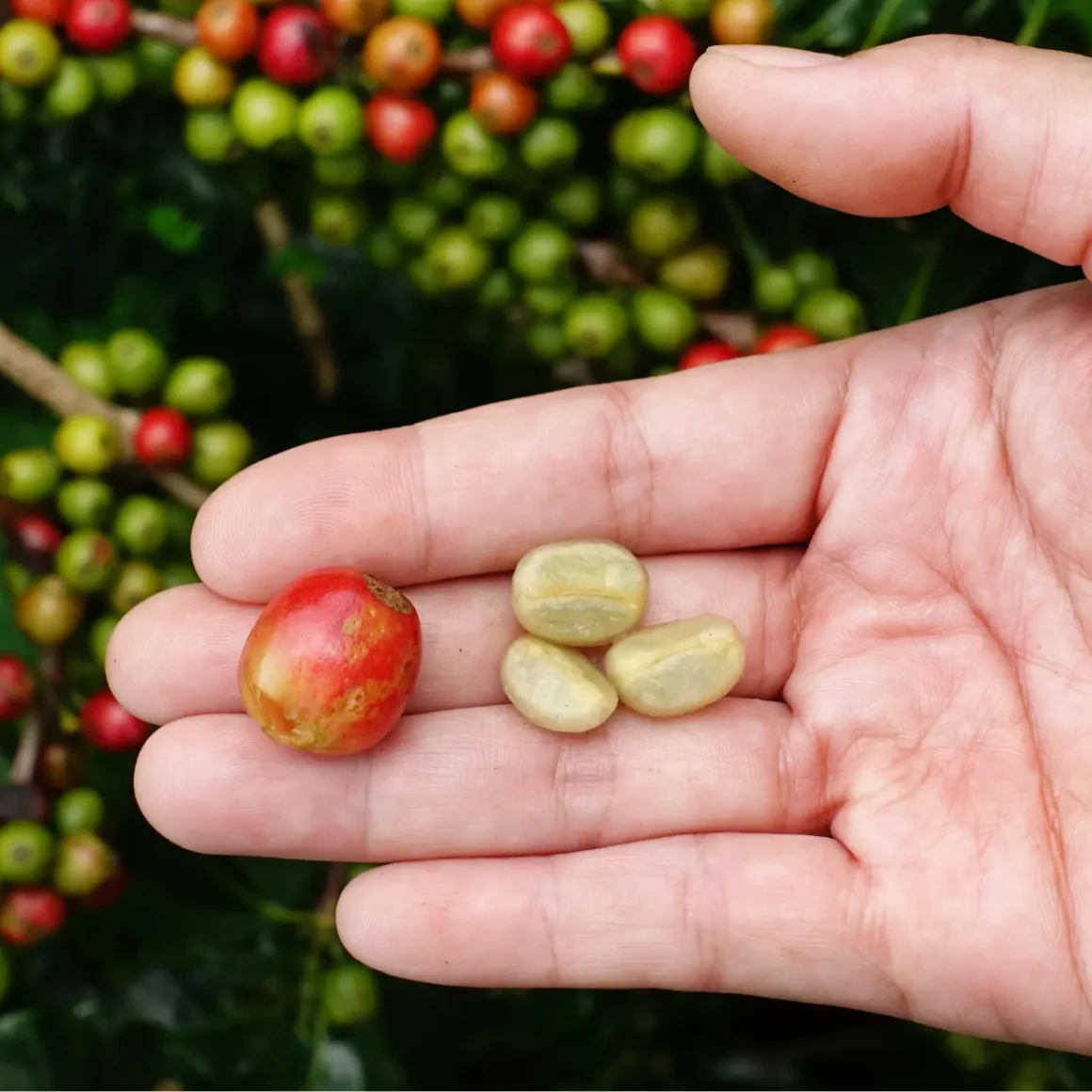
The structure of a coffee cherry is complex, consisting of several layers, each with its unique role:
- Exocarp (Outer Skin): This is the outermost layer of the cherry, typically red and somewhat thick, often harboring a bitter taste. (1)
- Mesocarp (Pulp): Located beneath the exocarp, the mesocarp is the fleshy part of the cherry. It’s rich in mucilage and complex sugars, offering a texture similar to grapes. This layer is also edible and can be used in various ways.
- Parenchyma: The exocarp consists of a solitary sheet of parenchyma cells. These parenchyma cells possess slender walls containing chloroplasts, enabling them to absorb water. The presence of chloroplasts imparts the green hue to the coffee cherry.
- Endocarp (Parchment): Enveloping the coffee beans, the endocarp is a parchment-like layer. It’s essential in the ripening process, as it encases the beans, which are positioned with their flat sides facing each other.
- Perisperm (Silver Skin): The innermost layer, directly covering the coffee beans. This thin membrane is often referred to as the silver skin or seed coat.
Understanding the anatomy of a coffee cherry is crucial for comprehending how each component contributes to the flavor and quality of the coffee beans.
The Varieties and Species of Coffee Cherries
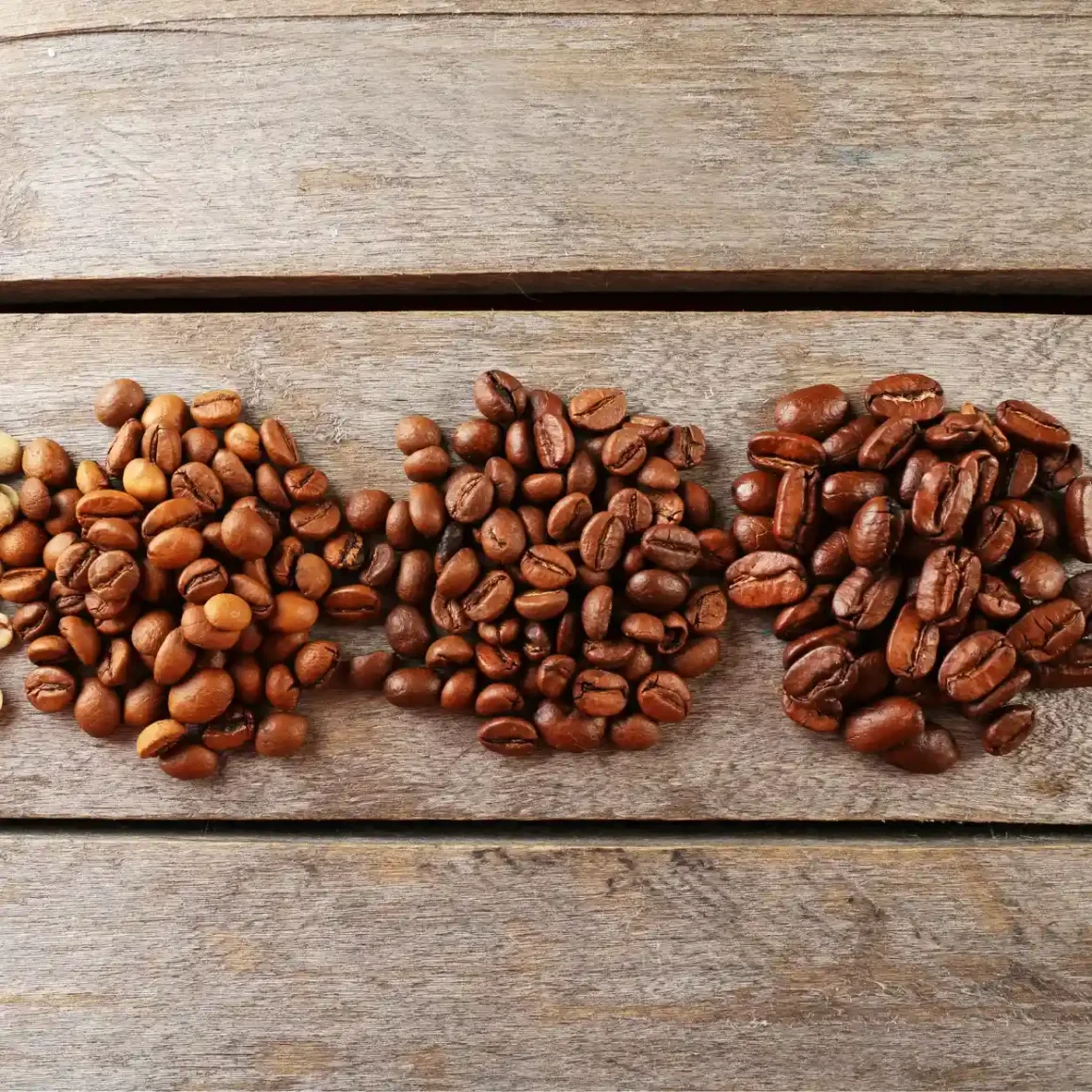
There are several varieties and species of coffee cherries, each thriving under different conditions and yielding distinct flavor profiles:
- Coffea Arabica: Known as Arabic coffee, it’s the first cultivated coffee species, accounting for about 60% of global coffee production. Arabica thrives in high altitudes and is characterized by its smooth, aromatic flavor. It’s a polyploid species, having evolved through a hybridization event, and grows in the understory in forests of South Ethiopia and Yemen. Arabica coffee is valued for its less acidic, subtly flavored beans.
- Coffea Robusta: Making up 40-45% of global coffee production, Robusta coffee is more resilient to heat and pests. It’s grown in lower altitudes, resulting in a stronger, more bitter flavor. Native to central and western sub-Saharan Africa, Robusta has a higher caffeine content and less sugar compared to Arabica, and it’s widely used in instant coffee and espresso. (2)
- Coffea Liberica: This variety, native to West and Central Africa, has found its way to regions like the Philippines, Colombia, and Malaysia. It’s known for its large cherries, beans, and leaves. Liberica coffee beans are asymmetrical with a “hook” at the tip, and it makes up less than 1.5% of global coffee production. Its rarity and unique flavor make it a prized variety.
- Coffea Excelsa (Dewevrei): Initially discovered in Central Africa, Excelsa coffee is now grown in Southeast Asia. It was reclassified as a variety of Liberica in 2006. Excelsa plants grow like trees, requiring vertical space, and produce large leaves and asymmetrical beans. They thrive at altitudes between 1,000 to 1,300 meters and are resistant to common coffee diseases.
Each variety impacts the coffee’s taste, acidity, and body, making the choice of variety crucial for both growers and consumers.
From Cherry to Bean: The Processing Journey
The journey of a coffee cherry from the branch to the cup is a complex process, crucial in determining the final flavor and quality of the coffee. This journey involves several stages, each with its own set of methods and techniques that significantly influence the taste of the coffee.
Harvesting Methods
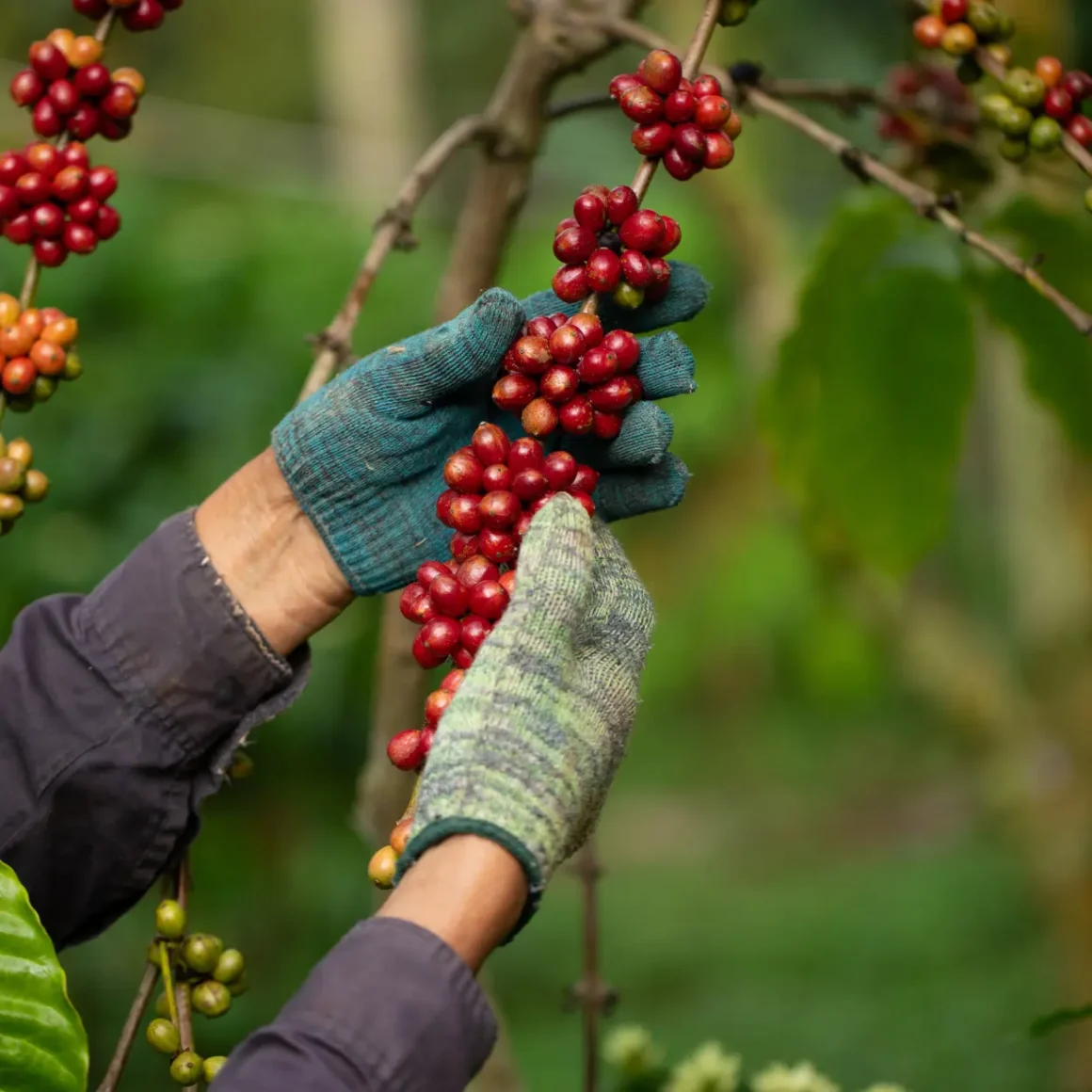
Harvesting coffee cherries is a critical step in the coffee production process:
- Manual Picking: This traditional method involves handpicking ripe cherries. It’s labor-intensive but allows for selective harvesting, ensuring only perfectly ripe cherries are picked.
- Strip Picking: In this method, all cherries are stripped off the branch, regardless of their ripeness. It’s faster but can compromise the quality of the harvest.
- Mechanical Harvesting: Used mostly in large-scale farms, machines are employed to shake or strip the cherries from the tree. This method increases efficiency but may include unripe cherries. (3)
Each harvesting method impacts the uniformity and quality of the coffee, with manual picking often resulting in a superior harvest.
Processing Techniques: Washed vs. Natural Coffee
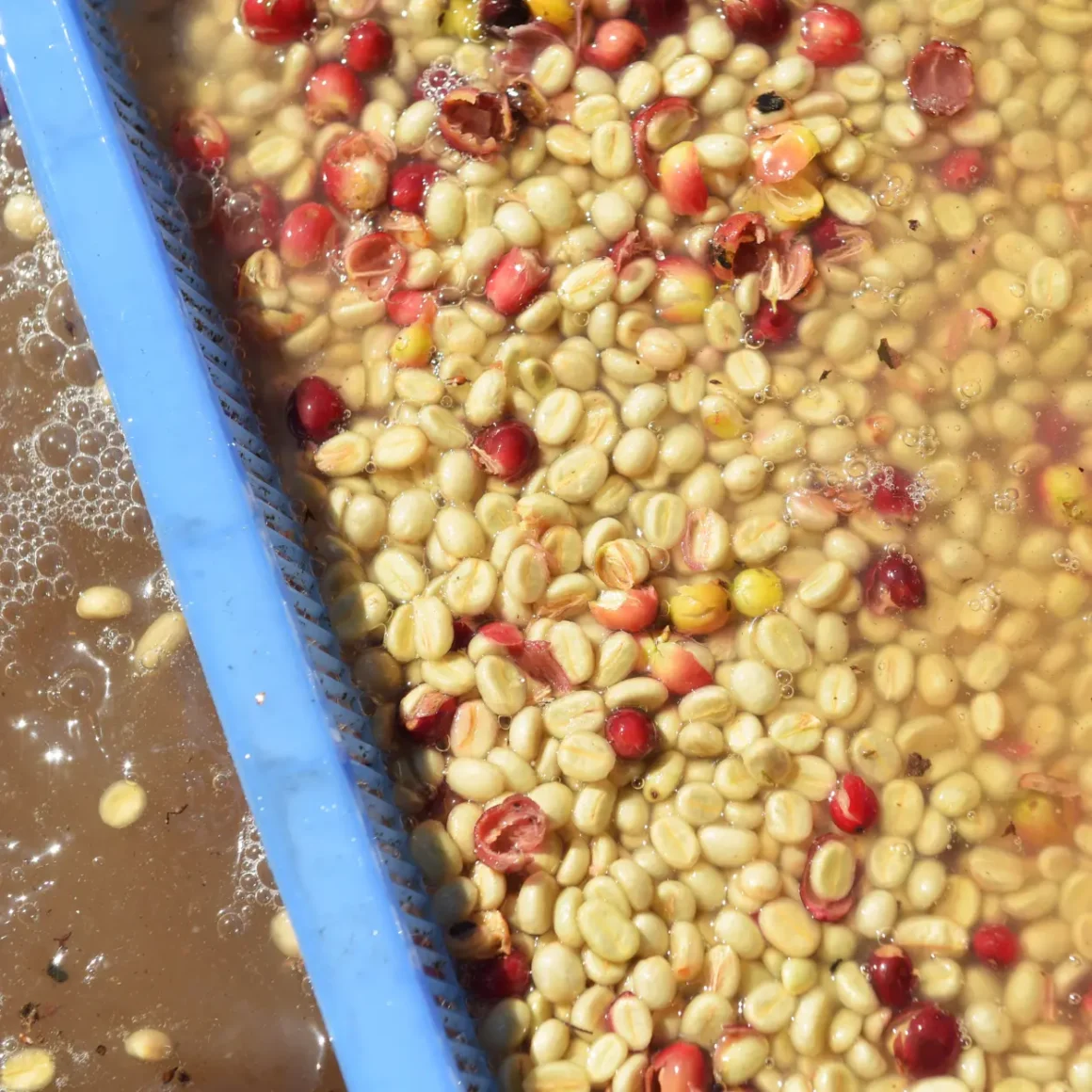
The post-harvest processing of coffee cherries is divided into two primary methods, each imparting distinct characteristics to the coffee:
Washed (Wet) Process:
- Cherries are de-pulped to remove the outer skin.
- Fermentation is used to separate the mucilage from the bean.
- Beans are washed and then dried, leading to a cleaner, more acidic coffee.
Natural (Dry) Process:
- Cherries are dried with the pulp and skin intact.
- The process takes longer and can produce a fuller-bodied, sweeter coffee.
- There’s a higher risk of over-fermentation, which can add fruity or fermented notes.
The choice between washed and natural processes affects the flavor profile, body, and acidity of the coffee.
Learn more about the differences of Washed and Natural coffee processing with our article: Washed vs Natural Coffee
Drying and Milling Processes
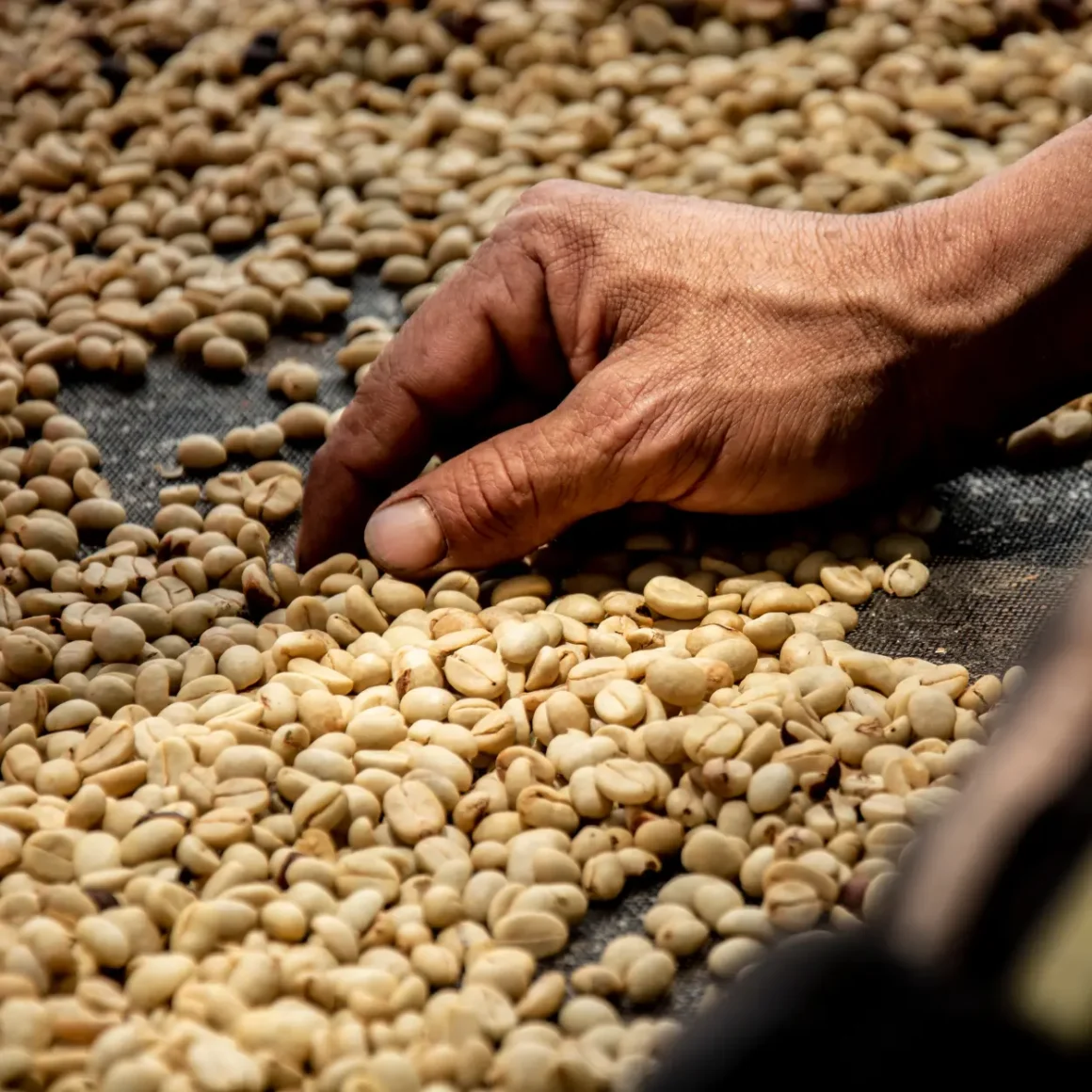
Once processed, the beans undergo drying and milling:
Drying:
- Can be done naturally in the sun or using mechanical dryers.
- The goal is to reduce moisture content to about 11%.
- Proper drying is crucial to prevent mold and spoilage.
Milling:
- Hulling machines remove the parchment layer from the dried beans.
- Polishing may be done to clean the beans further.
- Grading and sorting are performed based on size and quality.
These processes are essential for preparing the beans for roasting, which is the final step before brewing. The meticulous attention to each step in the journey from cherry to bean ensures the high quality of coffee that enthusiasts around the world cherish.
Impact on Coffee Flavor and Quality
The journey from a coffee cherry to a cup of coffee is filled with numerous stages, each playing a vital role in shaping the final taste and quality of the coffee. Understanding these stages helps in appreciating the complexity and diversity of coffee flavors.
How Cherry Processing Affects Flavor
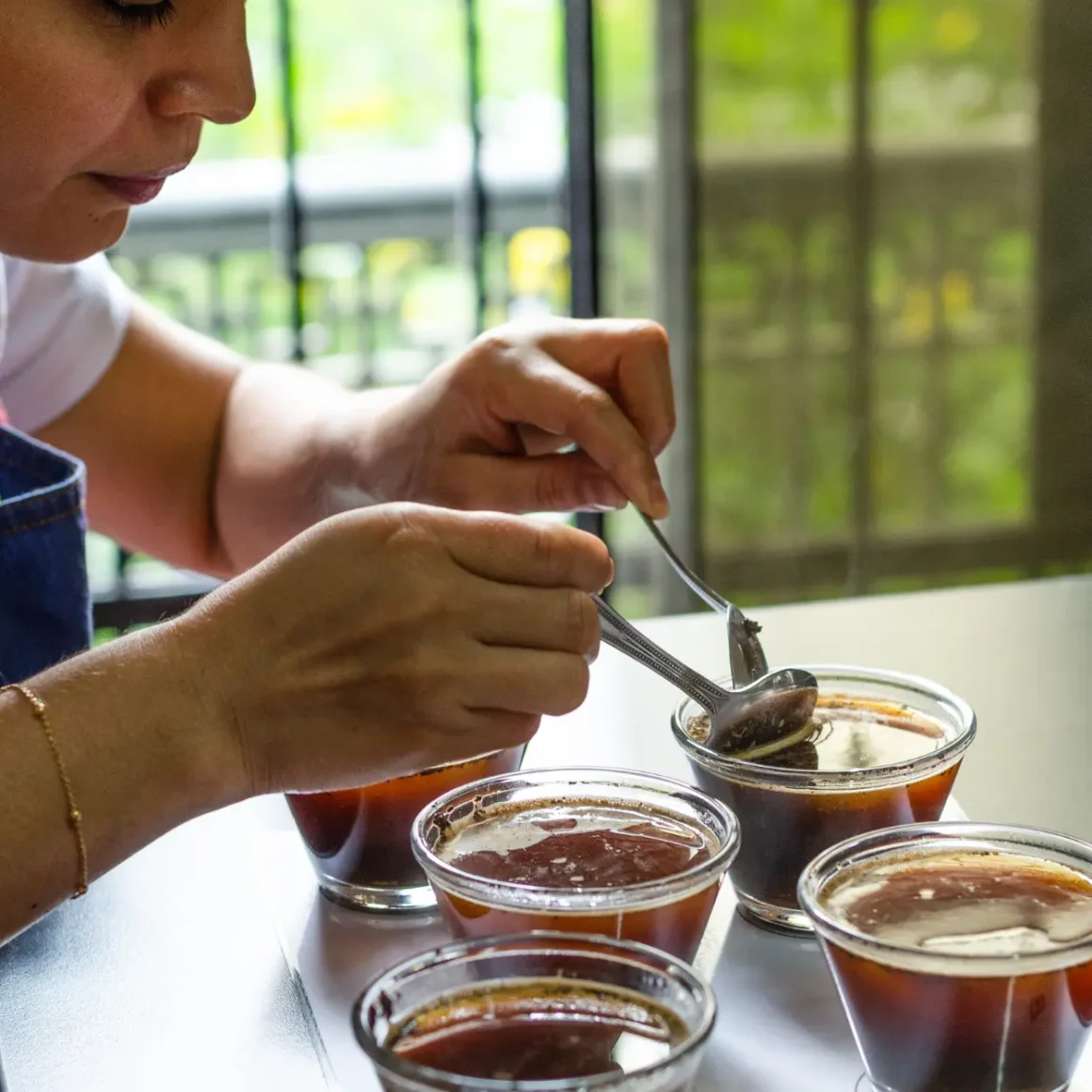
The method used to process coffee cherries significantly impacts the flavor profile of the coffee:
- Washed Process: This method involves removing the cherry’s skin and pulp before drying the beans. It typically results in a cleaner, brighter, and more acidic flavor profile. This process allows the intrinsic flavors of the bean to shine, unmasked by the sugars and fermenting agents in the fruit.
- Natural Process: In this method, the cherries are dried with the beans still inside. It often leads to a sweeter, fuller-bodied coffee with hints of fruitiness and a more pronounced complexity. The extended contact with the cherry’s sugars and mucilage imbues the beans with these characteristics.
- Honey Process: A hybrid method where some of the mucilage is left on the bean during drying. It results in a cup that balances the clarity of washed coffee with the body of natural-process coffee.
Each processing method imparts unique qualities to the coffee, making it a significant factor in determining the final taste.
The Role of Terroir in Coffee Cherry Quality

“What is Terroir?” This French term, widely used in the wine industry, is equally important in coffee production. It refers to the environment in which the coffee is grown and includes several factors:
- Climate: Temperature and rainfall patterns greatly influence the growth and quality of coffee cherries.
- Soil: The type and quality of soil affect the nutrient uptake and, consequently, the flavor profile of the coffee.
- Altitude: Higher altitudes often lead to slower cherry maturation, resulting in denser beans with more complex flavors.
Terroir plays a crucial role in determining the quality and unique flavor characteristics of coffee cherries, making each coffee-growing region distinct.
Selecting Quality Coffee Cherries
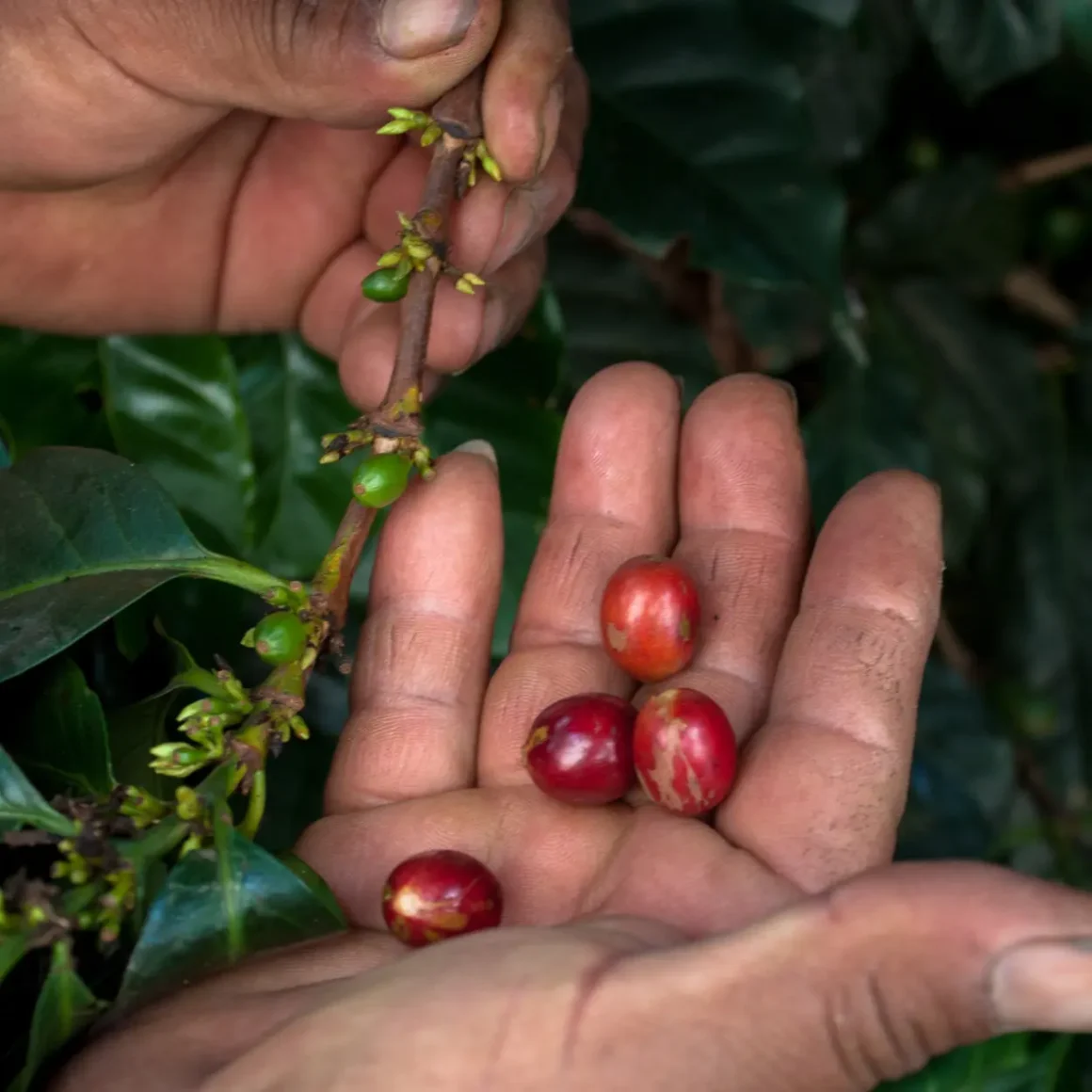
Selecting high-quality coffee cherries is essential for producing premium coffee:
- Ripeness: The degree of ripeness greatly impacts the flavor. Only perfectly ripe cherries should be picked for high-quality coffee.
- Health of the Cherry: Cherries should be free from pests and diseases. Healthy cherries contribute to a cleaner and more consistent flavor profile.
- Uniformity: Ensuring uniformity in size and ripeness of cherries leads to more consistent roasting and flavor.
The selection of quality coffee cherries is a meticulous process that significantly influences the final taste and quality of the coffee. The skill and care invested in this stage are key to producing exceptional coffee.
Sustainability and Ethical Considerations
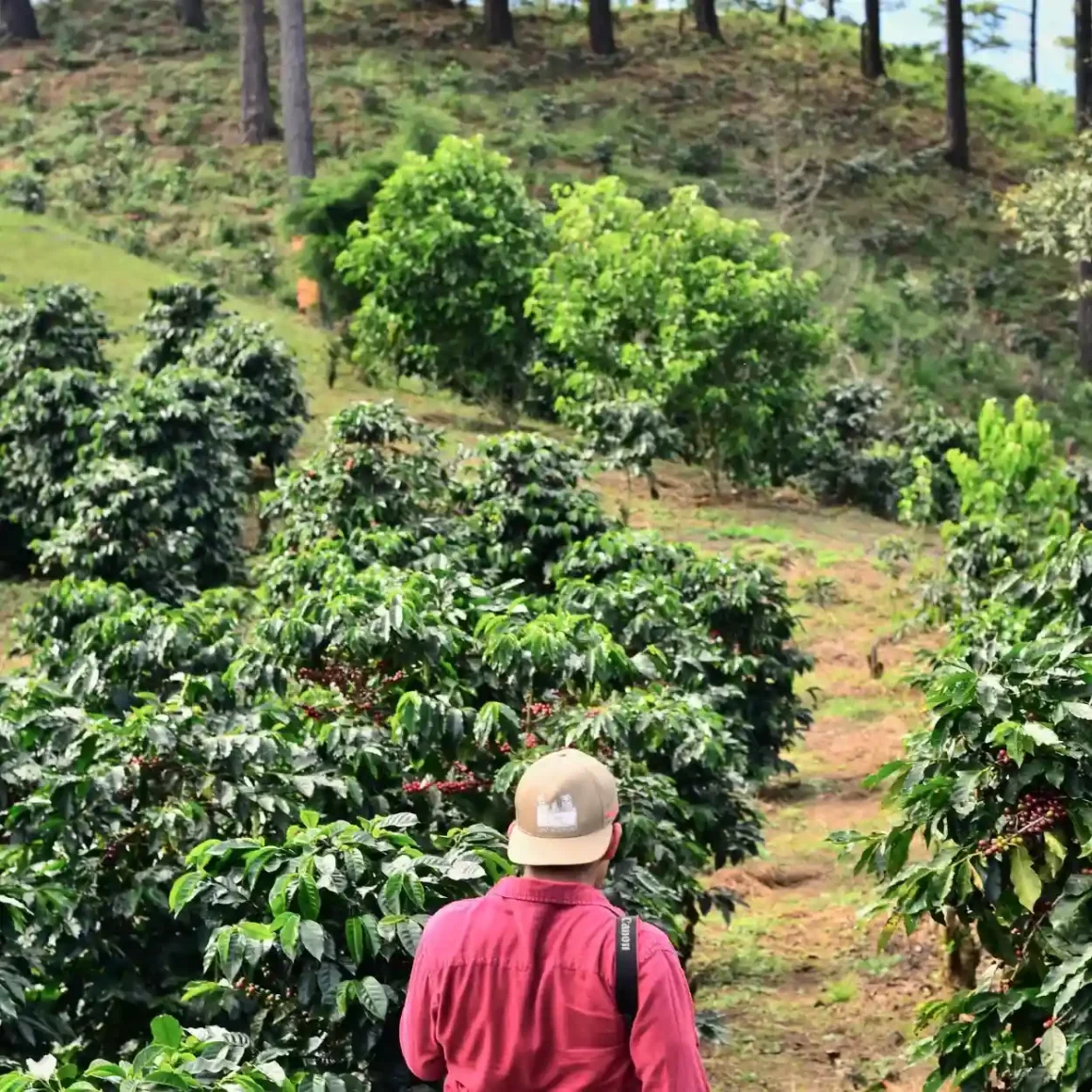
In the world of coffee production, sustainability, and ethical considerations have become increasingly crucial. The journey from cherry to cup involves numerous processes, each with potential environmental and social impacts. Understanding and addressing these impacts is key to ensuring the future of coffee production is as responsible as it is flavorful.
Environmental Impact of Coffee Cherry Production
The production of coffee cherries and their subsequent processing can have significant environmental consequences:
- Deforestation and Biodiversity Loss: Coffee cultivation often leads to deforestation, which in turn affects biodiversity. Practices such as shade-grown coffee can mitigate these impacts by preserving natural habitats.
- Water Usage and Pollution: Coffee processing, especially the washed method, can be water-intensive and lead to water pollution. Implementing water-efficient practices and proper wastewater treatment can minimize this impact.
- Carbon Footprint: The entire coffee production chain, from farming to transportation, contributes to carbon emissions. Employing renewable energy sources and optimizing transportation can reduce this footprint.
The environmental sustainability of coffee cherry production is essential, not just for the health of our planet but also for the long-term viability of the coffee industry itself.
Fair Trade and Ethical Sourcing
Fairtrade and ethical sourcing are vital to the integrity of the coffee industry:
- Fair Compensation: Ensuring farmers and workers receive fair compensation is crucial. This not only supports their livelihoods but also encourages sustainable farming practices.
- Working Conditions: Safe and humane working conditions are a fundamental aspect of ethical sourcing. This includes adequate wages, reasonable working hours, and a safe working environment.
- Community Support: Supporting coffee-growing communities through education, healthcare, and infrastructure development leads to a more sustainable and ethical coffee industry.
Ethical sourcing and fair trade practices are not just moral obligations but also contribute to the production of higher-quality coffee.
Innovations in Sustainable Practices
Innovations in sustainable practices are transforming the coffee industry:
- Agritech Innovations: New agricultural technologies are making coffee farming more efficient and less harmful to the environment. This includes precision agriculture, which optimizes resource use and minimizes waste.
- Waste Reduction and Upcycling: Innovations in processing and waste management, such as turning coffee waste into biofuels or fertilizers, are reducing the industry’s environmental impact.
- Sustainable Packaging: The move towards biodegradable and recyclable packaging materials is reducing the carbon footprint of coffee products.
These innovations are not only making coffee production more sustainable but are also setting new standards for the industry as a whole. The adoption of sustainable practices ensures that the coffee industry continues to thrive while being mindful of its impact on the planet and its inhabitants.
Beyond the Bean: Other Uses of Coffee Cherries
While coffee beans are globally celebrated for their role in producing the beloved beverage, the coffee cherry itself, often overlooked, holds a trove of potential uses. These uses extend beyond traditional coffee brewing, exploring innovative ways in which this fruit can contribute to various industries, from culinary arts to skincare.
Coffee Cherry Tea and Other Beverages
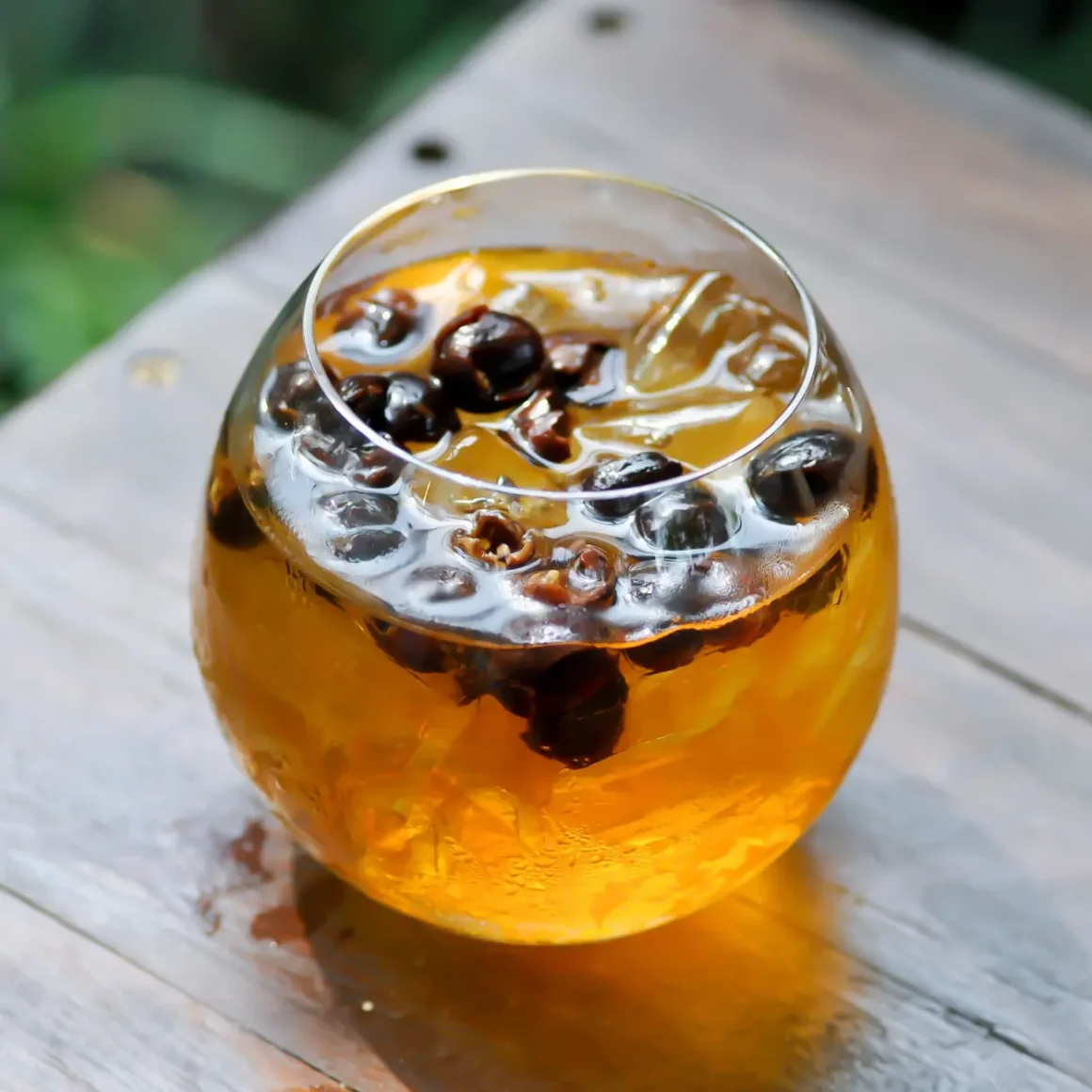
The versatility of coffee cherries is not limited to producing coffee beans but also extends to creating unique beverages:
- Coffee Cherry Tea (Cascara): Made from the dried skins of the coffee cherry, cascara offers a tea-like beverage, distinct from traditional coffee. It has a sweet, fruity flavor profile, different from the bitterness of coffee, and contains caffeine at levels between coffee and tea.
- Smoothies and Syrups: Coffee cherry pulp can be used in smoothies and syrups, providing a unique taste and nutritional benefits. It adds a subtle, fruity flavor and an antioxidant boost to beverages.
- Fermented Drinks: Fermenting coffee cherries can produce innovative drinks like coffee cherry wine or kombucha, offering a novel twist for beverage enthusiasts.
The application of coffee cherries in beverages showcases their versatility and opens up new avenues for flavor exploration.
Coffee Cherry in Culinary Applications

In the culinary world, the coffee cherry is a unique ingredient:
- Baking and Desserts: Ground coffee cherry can be used in baking, offering a subtle fruitiness to bread, cakes, and pastries. It adds a unique twist to traditional baked goods.
- Sauces and Marinades: The acidic and sweet nature of coffee cherries makes them suitable for sauces and marinades, providing a unique flavor profile to meats and vegetables.
- Health Foods: Rich in antioxidants, coffee cherries can be incorporated into health bars, granolas, and other health food items, offering a nutritious alternative to traditional ingredients.
The inclusion of coffee cherries in culinary applications not only enhances flavor but also incorporates the nutritional benefits of this often-wasted part of the coffee plant.
Coffee Cherries in Skincare and Cosmetics

Coffee cherries are increasingly being recognized for their benefits in skincare and cosmetics:
- Antioxidant-Rich Skincare Products: The high antioxidant content of coffee cherries makes them ideal for skincare products, helping to combat aging and protect the skin from environmental stressors.
- Exfoliating Scrubs: Ground coffee, with its natural texture, can be used in exfoliating scrubs to gently remove dead skin cells, revealing smoother and brighter skin. You can learn more about this topic with our article on how to make a coffee scrub at home.
- Natural Dyes: The pigments in coffee cherries can be used as natural dyes in cosmetics, offering a sustainable and chemical-free alternative to synthetic colors.
The exploration of coffee cherries in various industries highlights their versatility and potential beyond just producing coffee. These applications not only offer new experiences and benefits to consumers but also contribute to reducing waste in the coffee industry.
Conclusion
In conclusion, the coffee cherry is much more than just the precursor to our beloved coffee beans. It is a versatile and valuable resource that contributes to various aspects of our lives, from enhancing our culinary experiences to playing a pivotal role in sustainable agriculture and ethical trade. Through exploring the journey of the coffee cherry, its impact on flavor and quality, and its diverse applications, we gain a deeper appreciation for this remarkable fruit. The journey of understanding the coffee cherry reveals its potential as a sustainable resource and a catalyst for innovation across multiple industries. As we continue to explore and utilize this hidden gem, the coffee cherry stands as a testament to the richness and complexity of nature’s offerings.
FAQ
Can coffee cherries be eaten, and what do they taste like?
Yes, coffee cherries can be eaten. They have a sweet, fruity taste, often resembling flavors like honey or mango, with subtle berry notes.
What is the environmental impact of coffee cherry cultivation?
Coffee cherry cultivation can impact the environment through deforestation, biodiversity loss, water usage, and pollution, highlighting the need for sustainable farming practices.
How do different coffee cherry processing methods affect the final product?
Different processing methods, such as washed or natural, significantly alter the coffee's flavor profile, with washed methods leading to cleaner, more acidic flavors, and natural methods producing sweeter, fuller-bodied coffee.
What are the health benefits associated with coffee cherries?
Coffee cherries are rich in antioxidants and have been linked to health benefits such as reduced inflammation and potential protective effects against certain diseases.







